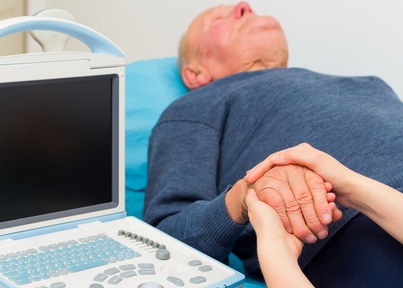Ultrasound accelerates skin healing for older people and those living with diabetes
Using ultrasound to treat more than 200,000 patients in the UK suffering with chronic wounds could save the NHS £3.1bn every year, according to a new study.

Researchers from the University of Sheffield’s Department of Biomedical Science, found that the healing times for skin ulcers and bedsores can be reduced by up to a third with the use of low-intensity ultrasound.
There are over 11 million people aged 65, three million people living with diabetes and 10 million smokers in the UK, all of whom are likely to suffer problems with skin ulcers and healing wounds.
Lead author of the study Dr Mark Bass, from the University’s Centre for Membrane Interactions and Dynamics (CMIAD) said: “Skin ulcers are excruciatingly painful for patients and in many cases can only be resolved by amputation of the limb.
“Using ultrasound wakes up the cells and stimulates a standard healing process. Because it is speeding up the normal processes, the treatment doesn’t carry the risk of side effects that are often associated with drug treatments.”
The pioneering study, published in The Journal of Investigative Dermatology, was carried out in collaboration with the School of Biochemistry at the University of Bristol, the Wound Biology Group at the Cardiff Institute of Tissue Engineering and Repair and the orthopaedic company, Bioventus LLC.
Researchers found that the ultrasound treatment was particularly effective when treating diabetics and older people.
At present, a quarter of diabetics suffer from skin ulcers, particularly foot ulcers, due to the loss of sensation and circulation in the legs.
Commenting on the findings, Dr Bass added: “Now that we have proven the effectiveness of ultrasound we need to explore the signal further. We have found that the ultrasound signal we currently use is effective, but it is possible that by refining the treatment we could improve the effects even further.
“Because ultrasound is relatively risk free we could expect to see it in broad clinical use within three or four years.”
Latest News
 29-Jul-24
Dementia Bus gives carehome.co.uk staff insight into life with dementia
29-Jul-24
Dementia Bus gives carehome.co.uk staff insight into life with dementia
 01-Mar-24
Find out the top care homes in 2024
01-Mar-24
Find out the top care homes in 2024
 21-Mar-23
UK's top care homes in 2023 revealed
21-Mar-23
UK's top care homes in 2023 revealed
 03-Jan-23
carehome.co.uk launches free care helpline
03-Jan-23
carehome.co.uk launches free care helpline
 13-Dec-22
5 mins with Emily Whitehurst, chief operating officer for Constantia Healthcare
13-Dec-22
5 mins with Emily Whitehurst, chief operating officer for Constantia Healthcare